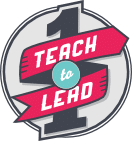Mentoring can be intimidating. If all of the ways that kids can be mentored were laid out on a table with index cards, we’d need a pretty big table. Truthfully, there are so many “right” ways to mentor. At Teach One to Lead One, we have a great program to teach at-risk kids to live their life more positively, and we only use the best mentors to do the job.
Although our mentors are trained to use the established T1L1 teaching methods, curriculum and principles, each mentor brings their own special experience to the table. At T1L1, we look for mentors that have overcome challenges in their own lives and can share the steps it took to get there with others. What’s great is when our mentors were at-risk kids themselves and have turned their lives around in an inspiring way. No matter their background, mentors are amazing individuals with an innate desire to help people – a characteristic that not everyone has. Our T1L1 mentors are the best of the best.
What do we look for in a mentor? We look to the T1L1 core principles as a guide because they make up the foundation of our mission. First is teamwork. We look for a mentor that won’t ever leave a team member behind. Our mentors have been through many different challenges and will face them all over again with their at-risk kids. By navigating obstacles together, mentors show at-risk kids that they’re never alone.
Mentors know that big goals can be scary. That’s why they constantly provide encouragement, giving at-risk kids the courage they need to achieve goals by breaking something big into small steps that show the clear path to success. A mentor who has already walked the walk successfully can demonstrate that courage always overcomes fear.
Our mentors are constantly stepping up to bat because it’s never easy to teach from the sidelines. Through compassion and humility, they’re involved every step of the way: leading the charge, lighting the path and encouraging at-risk kids to ask for help when they need it. Humility is the key to self-confidence, which is required for an at-risk kid to take a step back and be critical of their own work. Our mentors always provide positive feedback, yet when things go wrong, they are willing to talk through how a person of honor makes the right choice next time.
A mentor’s enthusiasm for success is contagious. A good mentor always lets an at-risk kid take the leap when they’re ready even if it means that failure is a possibility. Mistakes help at-risk kids grow and learn as individuals by boosting confidence the next time they want to tackle something similar. Mentors are a great example of excellence because they demonstrate that doing your best is progress towards a larger goal. Mentors teach that exercising excellence as a habit and consistent part of daily life means positive change.
By using all of the T1L1 principles, mentors don’t just tell at-risk kids the right way, they show them. Some of the best mentors chose a path that wasn’t the smoothest ride, and by sharing that wealth of knowledge with at-risk kids, they can make the slow and often challenging journey less bumpy.




